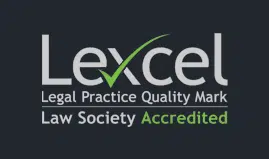When you’re injured due to an accident or someone else’s negligence, it can be an overwhelming and distressing time. You may face physical, emotional, and financial challenges while trying to recover.
If your injury results from someone else’s fault, pursuing a personal injury claim can help you seek compensation for your damages. However, the personal injury claims process can often seem complicated, leaving many unsure of how to proceed. But it doesn’t have to be. This guide will help you understand each stage of a personal injury claim.
When you’re ready, contact us online or call 0330 057 2286 to speak to an adviser and get the ball rolling. We will support you every step of the way and make sure your claim is as simple and effective as possible.
1. Contact a Personal Injury Solicitor
The first step to making a personal injury claim is to contact a solicitor. Though it’s possible to file a personal injury claim without legal representation, a personal injury solicitor can help you with the process. This is recommended, as it can quickly become quite complex.
They will assess the details of your case, review the evidence, and determine whether you have a strong claim. If you do, they will negotiate with the insurance company or the defendant’s legal team on your behalf, so that you receive fair compensation for your injuries. Solicitors often work on a no-win, no-fee basis, meaning you won’t have to pay any legal fees unless you win your case.
2. Determine Who Is Responsible
The first step when making a personal injury claim is to determine who’s responsible. That’s who you’ll be claiming against. If you have been injured at work, you may wish to file an accident at work claim. However, if it’s faulty equipment, for example, that caused your injury, we would look at claiming against the manufacturer.
How to Identify the Responsible Party
The responsible party is usually the individual, business, or entity whose negligence or wrongful actions caused your injuries. Some common examples include:
- Car Accidents – The at-fault driver, a vehicle manufacturer (if a defect caused the accident), or even a government entity (if poor road conditions contributed). If you’ve been involved in a car accident, learn more about how we can help with road traffic accident claims.
- Slip and Fall Accidents – A property owner, business operator, or maintenance company that failed to keep the premises safe. For more information on how we can help with slip, trip, and fall claims, visit our Slips, Trips, and Fall Claims page.
- Workplace Injuries – An employer (in certain cases), a third-party contractor, or a manufacturer of defective equipment. For more information on how we can help with accident at work claims, visit our Accident at Work Claims page.
- Medical Malpractice – A doctor, nurse, hospital, or medical facility that provided negligent care. For more information on how we can help with medical negligence claims, visit our Medical Negligence Services page.
In many situations, the claim is not filed directly against the individual or company responsible for the accident but rather against their insurance provider. Even if the responsible party cannot be identified, we may still be able to help you make a claim. For instance, if you’re injured by an unidentified hit-and-run driver, you may be eligible to file a claim through the Motor Insurers’ Bureau.
Your help is important at this stage—providing as much information as possible about the accident will help move the process forward. This leads us to our next stage…
3. Proving Liability
To hold someone responsible for your injury, you must prove negligence by demonstrating the following elements.
1. Duty of Care – The responsible party had a legal obligation to act with care to prevent harm.
2. Breach of Duty – They failed to uphold this duty through reckless or negligent actions.
3. Causation – Their negligence directly caused your injury.
4. Damages – You suffered actual losses (medical bills, lost income, pain and suffering).
Your solicitor will help you understand and gather this information.
Document the Incident
Gathering strong evidence is important to proving liability. The more evidence you have, the stronger your case will be. Useful evidence includes:
- Photographs: Take clear pictures of the scene of the accident, any damage to property, and your injuries. This visual evidence can be crucial when proving the severity of the incident and your injuries.
- Witness Information: If there were any witnesses to the accident, get their contact information, including names, phone numbers, and addresses. Witnesses can help back up your version of events.
- Police Reports: If the accident involved law enforcement (e.g., a car crash), request a copy of the police report. This report may contain critical details about the accident, such as who was at fault, the circumstances, and any legal violations.
The more detailed and thorough your documentation, the better your chances of obtaining a fair settlement.
4. Assess Your Injuries or Illness
An important step in the personal injury claim process is assessing the extent of your injuries or illness. Proper assessment not only determines the severity of your condition but also helps in calculating the compensation you may be entitled to.
Get Medical Attention
One of the very first steps before filing a claim after an accident or injury is to get any medical attention you may require. Even if your injuries seem small, they may worsen over time. A doctor’s evaluation provides medical records that will serve as evidence for your claim.
Types of Injuries in Personal Injury Claims
Depending on the nature of the accident, injuries can range from mild to severe, including:
- Physical Injuries – Broken bones, burns, whiplash, head injuries, spinal damage, and more.
- Psychological Injuries – PTSD, anxiety, depression, and emotional distress.
- Long-Term or Chronic Conditions – Conditions that develop over time due to workplace exposure, medical negligence, or repeated strain.
Gathering Medical Evidence
To strengthen your claim, it is important to gather medical evidence, which may include:
- Medical Reports – Diagnosis, treatment plans, and long-term prognosis from healthcare professionals.
- Prescriptions and Treatment Records – Documentation of medication, physiotherapy, or rehabilitation programs.
- Expert Medical Assessments – Independent medical evaluations that assess the long-term impact of your injury.
Calculating the Impact of Your Injury
The severity of your injury affects the amount of compensation you may receive. This includes:
- Short-Term Impact – Immediate medical costs, lost wages, and pain and suffering.
- Long-Term Impact – Future medical expenses, rehabilitation, loss of earning potential, and reduced quality of life.
By thoroughly assessing your injuries, you can build a stronger case for fair compensation. A personal injury solicitor can help ensure that all aspects of your condition are properly documented and considered in your claim.
5. Notify the Responsible Party or Insurance Company
Once you’ve documented everything, your next step is to inform the responsible party or their insurance company of your intent to make a claim. If the injury is due to a road traffic accident, you typically deal with the other party’s auto insurance company. If it’s an accident at work or caused by someone’s negligence in a public place, you may need to contact their insurance provider or the company involved.
Notify the insurance company as soon as possible to begin the claims process. Some policies require immediate notification within a set period, so make sure you comply with any timeframes to avoid having your claim rejected.
6. Work out Your Compensation Amount
Once liability has been established and you have notified the responsible party, the next step in the personal injury claim process is calculating how much compensation you are entitled to. This amount is based on various factors, including the severity of your injuries, financial losses, and the overall impact on your life.
Types of Compensation
Compensation in a personal injury claim typically falls into two categories:
1. General Damages – Cover the pain, suffering, and loss of enjoyment of life caused by the injury. The amount varies depending on the severity and long-term effects of the injury.
2. Special Damages – Cover financial losses incurred as a result of the injury, including:
-
- Medical expenses (current and future treatment)
- Loss of earnings (including future lost income if unable to work)
- Rehabilitation costs (such as physiotherapy or counselling)
- Travel expenses related to medical care
- Adaptations to your home or vehicle (if necessary due to your injury)
How Compensation is Calculated
To determine a fair compensation amount, the following factors are considered:
- Medical Reports – Provide an expert assessment of your injuries and potential long-term effects.
- Loss of Income and Future Earnings – If your injury affects your ability to work, compensation will include lost wages and potential future earnings.
- Impact on Daily Life – If your injury causes permanent disability or significantly affects your quality of life, compensation will reflect these challenges.
- Comparable Case Settlements – Previous similar claims can provide an estimate of what your claim may be worth.
7. Make a Claim for Compensation
The next step is to formally make your compensation claim. This usually involves submitting a “letter of claim” to the responsible party or insurer. In this letter, your solicitor will detail the circumstances of the accident, explain how the other party is at fault, and outline the injuries you sustained as a result.
This is where all your medical documentation, witness statements, and photos come into play. Your solicitor will gather all the necessary evidence and present it to the insurer or the other party’s legal team.
The insurance company or the responsible party will have a period to respond to your claim, usually within 21 to 30 days, depending on the circumstances.
8. Negotiate a Settlement
After you’ve submitted your claim, the insurance company or defendant may either accept responsibility for the accident or dispute your claim. If they accept responsibility, the next step is to negotiate the settlement. It’s important to remember that the first offer may not reflect the full extent of your damages.
Your solicitor will assess the offer and help you determine whether it’s reasonable. They will negotiate to make sure you’re compensated for financial losses (such as medical bills and lost wages) and non-financial damages (such as pain and suffering). You are not obligated to accept the first offer. If the offer is deemed inadequate, your solicitor can reject it and continue negotiations or even proceed to court if necessary.
If we can’t reach a fair offer, we’ll take your claim to court. While we always try to negotiate a settlement first, sometimes the court is unavoidable. If your case goes to court, a judge will review the evidence and decide your compensation. You may need to attend and give evidence. With decades of experience, we’ll support you every step of the way and explain everything clearly. Even after a court date is set, you can still receive an out-of-court settlement, which would cancel the hearing.
It must be noted that less than 5% of personal injury claims in the UK proceed to court, with the majority of cases being resolved through settlements. This avoids the time, cost, and uncertainty associated with litigation. Your solicitor will assess the offer and help you determine whether it’s reasonable. They will negotiate to make sure you’re compensated for both financial losses (such as medical bills and lost wages) and non-financial damages (such as pain and suffering).
9. Final Settlement and Compensation
Once a settlement is agreed upon or a court judgment is made, you will receive your compensation payment. This payment is to cover medical expenses, lost wages, pain and suffering, and any future care costs related to your injury.
Your solicitor will ensure that the settlement terms are fair and you are fully compensated for your losses. They will also take their legal fees from the compensation.
10. Post-Settlement Considerations
After receiving your compensation, there may be post-settlement considerations, such as tax implications or the need for ongoing care. If your injury is long-term, your solicitor may recommend setting up a personal injury trust to manage the funds. A personal injury trust ensures that your compensation remains separate from other assets, protecting your eligibility for benefits and allowing you to use the funds as intended.
Ready to Make Your Personal Injury Claim?
The personal injury claims process can be confusing, there are a lot of steps! From seeking medical attention and documenting the incident to negotiating a fair settlement, each step is key to ensuring you receive the compensation you deserve.
If you’ve been injured due to someone else’s negligence, you must act quickly, gather evidence, and consult a personal injury solicitor to help you. While the road to compensation may seem daunting, pursuing a claim can help you recover financially and emotionally from the effects of your injury.
If you’re ready to start your injury claim, fill out CEL Solicitors’ Personal Injury Claim Form to begin the process. Alternatively, learn more about how we can help by visiting our Personal Injury Services Page. Our expert team is here to support you every step of the way!













